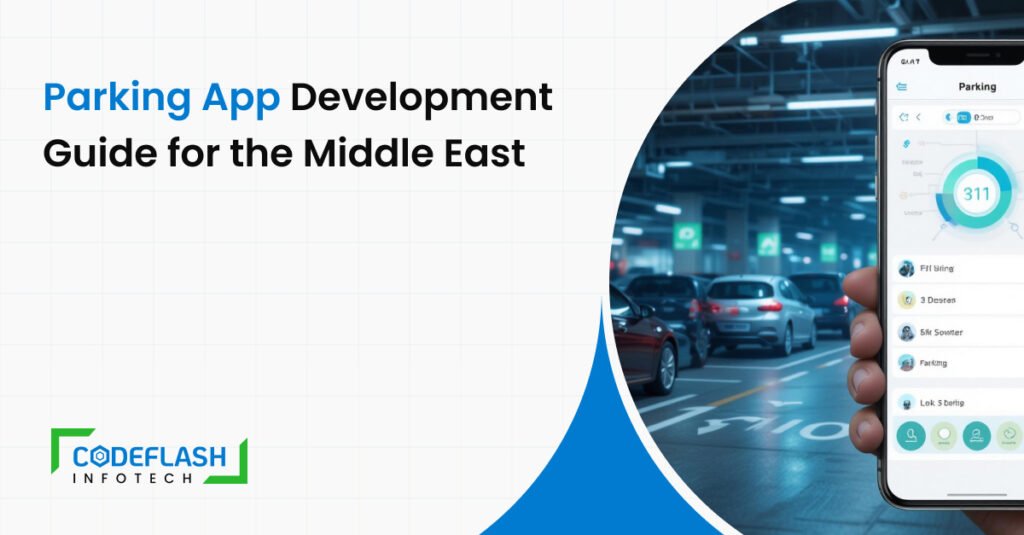
DoorDash Business Model - Revenue & SWOT Analysis Guide
20 OCTOBER
Certainly! DoorDash’s Business Model‘s profitability is driven by a combination of revenue streams, including delivery fees, restaurant collaborations, and DashPass subscriptions. Their adept logistics management and expansive market reach have favoured them in the fiercely competitive food delivery sector.
In this blog article, we’ll delve into the intricacies of the DashDass subscriptions strategy and revenue model. We’ve covered you, from their restaurant partnerships to pricing strategies. So, prepare for an informative journey as we uncover the factors propelling DoorDash’s Business Model‘s success!
What is DoorDash?
In 2013, DoorDash was founded by four Stanford University students with a mission to streamline the food delivery experience for people at home. Through DoorDash’s website or mobile app, customers can easily browse restaurant menus and place orders from local eateries. The company collaborates with restaurants and relies on a network of drivers to fulfil these orders.DoorDash Business Model, a prominent player in the industry, serves customers in over 4,000 locations across the United States, Canada, and Australia.
Figures and Facts about DoorDash Business Model
The following are some crucial data points for DoorDash:
- Four Stanford University students, Tony Xu, Stanley Tang, Andy Fang, and Evan Moore, established DoorDash in 2013.
- DoorDash had 8.5 million active users and more than 500,000 merchants on its network as of Q4 2021.
- Revenue for DoorDash increased to $2.9 billion in 2020 from $885 million in 2019.
- DoorDash went public in December 2020 with an initial public offering (IPO) valued at $72 billion.
- Food delivery, grocery delivery, and alcohol delivery (where permitted by law) are just a few of the delivery choices that DoorDash’s Business Model
- DoorDash offers several extra services for businesses, including marketing and analytics tools and delivery services.
- Regarding how it treats delivery drivers and the fees it charges businesses, DoorDash has come under fire.
- 2020 saw the announcement by DoorDash of a $200 million fund to assist regional eateries amid the COVID-19 epidemic.
- DoorDash had 1.8 million delivery personnel (often referred to as “Dashers”) registered on their network as of Q4 2021.
How Does DoorDash's Business Model Function?
Individuals and companies make up DoorDash’s two main consumer segments. Customers may order food for themselves, their families, and friends via the DoorDash food Delivery App or website. Businesses may utilize DoorDash to deliver food to their staff members or clients. The following describes the fundamental operation of DoorDash:
- Customers Ordering: Customers may order from nearby restaurants via the DoorDash website or mobile app. Additionally, they may follow their order in real time and get updates on their progress.
- Once the restaurant receives and prepares the order. Restaurants may manage orders, monitor sales, and access consumer information via DoorDash’s platform.
- A delivery driver picks up an order: DoorDash has a network of delivery drivers that collect orders from restaurants and deliver them to clients. The DoorDash app allows drivers to accept delivery requests, find their way to the restaurant, and monitor real-time deliveries.
- The Delivery Driver delivers the Order: The order is delivered to the customer’s address after the delivery driver has picked it up. Real-time delivery tracking and alerts of the driver’s approach are available to customers.
- Payment and Review: Once delivered, the consumer pays for the order using the DoorDash app. By their experiences, they may also rate the restaurant and the delivery person.
- The DoorDash platform uses algorithms to shorten delivery times and improve delivery routes. Real-time tracking, customized suggestions, and customer assistance are just a few things the business provides to enhance the client experience.
The Door Dash's Business Model
DoorDash collaborates with a network of more than 300,000 eateries. The closest available Dasher (delivery person) is sent to pick up the food and deliver it to the client once a user places an order using the DoorDash app.
- Platform:
DoorDash runs a network that links patrons with nearby eateries. Customers may utilize the platform’s website and mobile app to explore menus, make orders, and follow the delivery in real time. The technology also allows restaurants to measure revenue, handle orders, and access client information. - Partnerships:
DoorDash collaborates with nearby businesses to provide clients with various culinary alternatives. Thousands of eateries all around the country are connected to the firm, and it is actively growing its network. DoorDash can give clients a wide range of meal alternatives by collaborating with eateries. - Delivery:
Customers may use DoorDash’s on-demand delivery services, a crucial component of its business strategy. The business utilises a network of delivery drivers to pick up orders from restaurants and deliver them to clients. To reduce delivery times and optimize delivery routes, DoorDash employs algorithms. DoorDash can attract and keep consumers by offering a quick and effective delivery service. - Revenue Model:
For each order made through its platform, DoorDash charges restaurants a commission fee and consumers a delivery fee. The commission, delivery fees, advertising, and subscription services are all ways DoorDash makes money. - Marketing:
To draw in and keep consumers, DoorDash makes marketing investments. The business advertises on social media, sends emails to customers, and utilizes other media to promote its platform. Additionally, DoorDash provides discounts and promotions to entice users to place orders on its website. - Technology:
DoorDash makes significant technological investments to enhance its platform and delivery services. The firm employs machine learning algorithms to estimate order numbers and improve delivery routes. Additionally, DoorDash employs data analytics to understand consumer behaviour and preferences. DoorDash can enhance its services and offer a better customer experience by utilizing technology.

DoorDash's Revenue Generation Model
DoorDash makes money by adding a commission fee to every order. According to the restaurant, the price might be larger or lower than 20% of the entire order amount. As an illustration, DoorDash would keep $20 as a commission if a consumer ordered a $100 meal.
- Commission Fees:
The commission charge varies based on the agreement between DoorDash and the restaurant and is often a percentage of the entire order amount. The primary source of income for DoorDash is this commission charge. - Delivery Fees:
In addition to commission costs, each order placed through DoorDash has a delivery fee. DashPass subscription offers free delivery for orders above a set amount, enhancing customer value. - Advertising:
Restaurants that wish to boost their visibility on the platform can use DoorDash’s advertising services. Additionally, DoorDash provides restaurants with sponsored listings and services for targeted promotion. - Subscription Services:
With DashPass, a membership service, orders exceeding a specific amount receive free delivery and lower service fees. Businesses may use DoorDash Drive to order deliveries for their customers or clients.
Value Propositions for Door Dash Business Model
For its clients—restaurants, delivery drivers, and customers—DoorDash has several value propositions. Some of the main value claims are:
- Convenience:
Customers may order food from their preferred nearby eateries using DoorDash’s simple and convenient platform. Customers may place meal orders from their computer or smartphone and follow the delivery in real-time. - Assortment:
A large assortment is available to clients because of DoorDash’s partnerships with thousands of neighbourhood eateries. Everything from quick food to fine dining is available for purchase by customers. - Fast Delivery:
DoorDash’s Business Model platform uses algorithms to shorten delivery times and optimize delivery routes. The business delivers Orders in less than an hour, which also offers quick and dependable delivery. - Cost-effective:
Compared to the price of going to the restaurant or paying for parking, DoorDash’s delivery fees are frequently less expensive. Customers may save money by taking advantage of DoorDash’s discounts and promotions. - Sales Growth:
DoorDash’s Business Model gives restaurants access to a sizable consumer base and gives them a practical way to handle orders and monitor sales. Restaurants may boost their sales and attract new customers by working with DoorDash. - Work That’s Flexible:
DoorDash offers delivery drivers a flexible and practical way to make a living. The number of hours that drivers work is entirely up to them. Additionally, DoorDash offers assistance and insurance to its drivers.
DoorDash has emerged as the leader in the meal delivery industry by faithfully delivering on these commitments. Are you interested in launching your own business, or perhaps you’re considering developing a food delivery application similar to DoorDash?

Opportunities & Challenges for DoorDash Business Model
Challenges:
- Competition: Many businesses seek market share in the competitive meal delivery sector. Other meal delivery services like Uber Eats, Grubhub, and Postmates compete with DoorDash.
- Delivery Fees: DoorDash Business Model uses a network of delivery drivers to pick up and deliver orders. The cost of employing and supervising drivers can be costly. Therefore the business must strike a balance between delivery costs and order prices.
- Rules: Compliance with food safety & labour laws is crucial for meal delivery services, but it’s costly & time-consuming. Adhering to regulations ensures customer safety & fair working conditions.
- Customer Retention: DoorDash depends on customers’ repeat business to make money. A high degree of customer satisfaction is necessary for the business to keep consumers and encourage repeat business.
Opportunities:
- Growth: DoorDash can take its business into new markets and gain market share. Even though the business has already spread to multiple nations, there is still a lot of possibility for expansion.
- Diversification: DoorDash can expand its clientele by introducing other services like meal kits or grocery delivery. This would enable the business to increase its clientele and create new revenue sources.
- Technology: is a tool that DoorDash may use to streamline operations and cut expenses. Utilizing data analytics, the business may shorten delivery times, enhance order accuracy, and optimize delivery routes.
- Partnerships: DoorDash might work with other companies to broaden its clientele or offer other services. For instance, the business may collaborate with a grocery shop to deliver groceries or with a restaurant to offer exclusive menu items.
DoorDash Alternatives
In addition to DoorDash, there are several alternative meal delivery services accessible. Uber Eats, Grubhub, and Postmates are a few of these. Every service has special qualities and advantages of its own.
One of the most well-known meal delivery services is UberEats. There are several places to select from, and food is delivered swiftly. Another well-liked choice that provides a selection of restaurants and delivery schedules is Grubhub. A more recent delivery service, Postmates, brings food from more establishments than simply eateries.
Doordash Future
The company’s future seems promising, given that DoorDash continues developing and diversifying its offerings. Here are a few probable developments that could affect DoorDash’s future:
DoorDash’s Business Model may continue to expand into new areas while strengthening its current position. This can entail entering new nations or extending into new towns and cities.
- Service Diversification: DoorDash may expand its offerings beyond meal delivery to include other services like grocery delivery or the delivery of prescription medications To gain deeper insights into pharmacy and healthcare platforms, you can explore our comprehensive blog article titled “Pharmeasy business model – A PharmEasy Success Story” and discover the key factors contributing to their remarkable success.
- Increasing the use of technology: DoorDash might keep using technology to increase the effectiveness of its operations and deliveries. The business may, for instance, utilize artificial intelligence to shorten delivery times and improve delivery routes.
- Continued Partnerships: DoorDash may continue working with other companies to provide additional services or broaden its customer base. Partnerships with grocery shops, pharmacies, or other merchants may fall under this category.
- Focus on Sustainability: DoorDash may look at methods to lessen its environmental effect as the company places more emphasis on sustainability. This can entail driving electric cars or working with eateries that focus on sustainability.
Overall, DoorDash’s future is expected to feature further development and expansion as it works to satisfy consumers’ and merchants’ changing demands.
Final Words
The DoorDash Business Model makes it simple for customers to receive their food quickly, and DoorDash provides a beautiful platform for companies to capitalize on the delivery boom. It gives eateries an affordable option to reach more customers and boost sales while providing customers with a quick and easy way to order from any restaurant. DoorDash will expand in the coming years because of its rising popularity among clients and businesses
Integrating a food delivery app can greatly boost your business, offering customers a convenient way to order. Our article “Why Food Delivery Businesses Need Mobile Apps” explains the benefits, from broadening your customer base to streamlining order management. It’s a valuable resource to help you decide whether a mobile app can enhance your food or restaurant venture. Don’t miss out on the growth and success that mobile technology can bring to your business.





